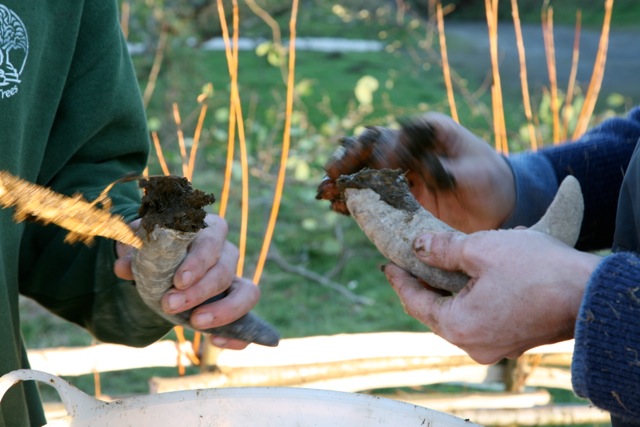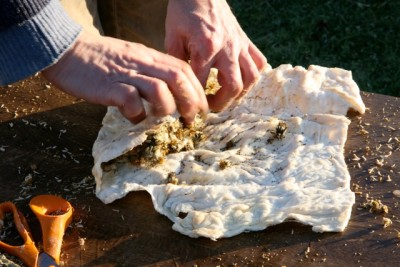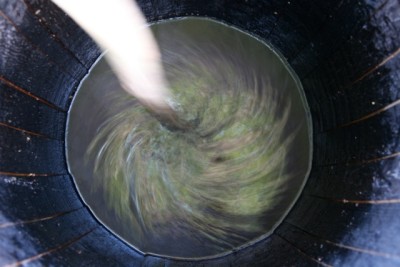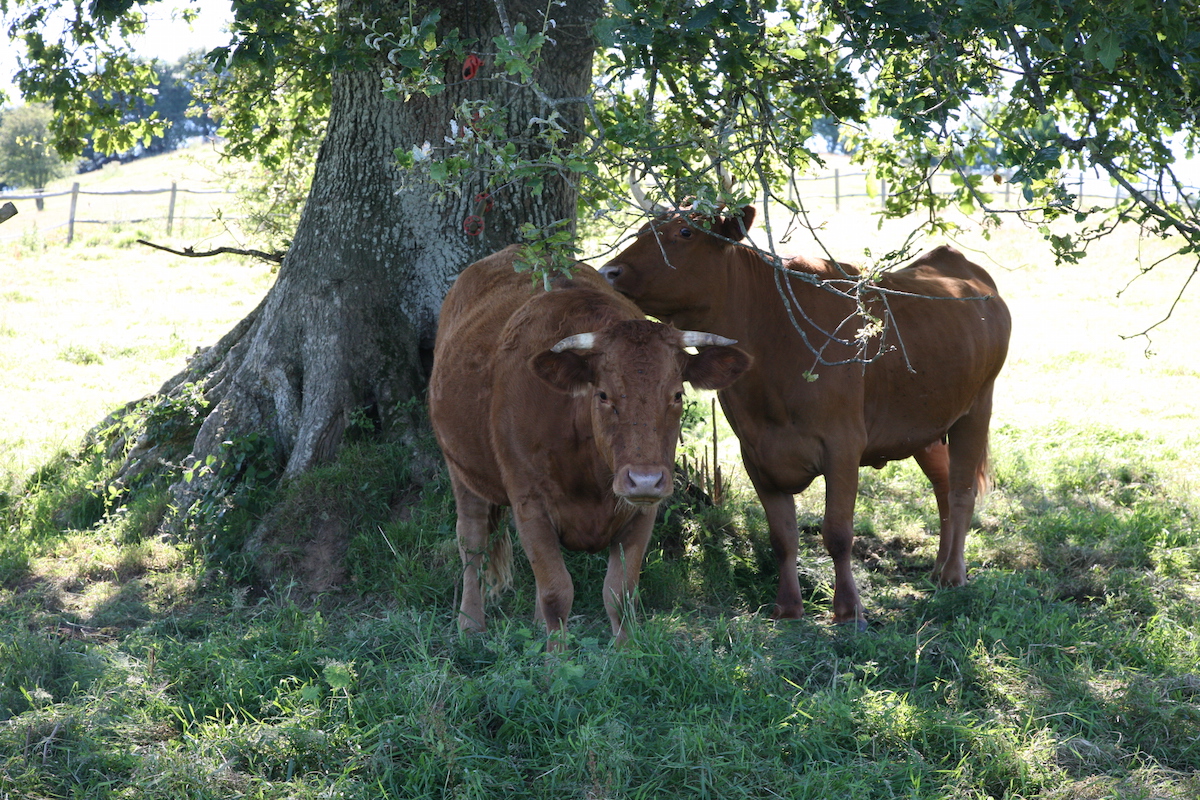Inspector, farmer and author Tom Petherick joins us a regular contributor. In his first post he explores the benefits of Biodynamic farming, highlighting some of the practical considerations of certification, the ‘preps’ and ‘sprays’.
There is something properly satisfying about working land that is certified organic, and in my case biodynamic too. It is not just the stamp of approval and the level of authenticity that comes with it, there is more to it than that. It has to do with being part of a network of people who really believe that being organic and even biodynamic matters.

I am the author of a blog/authority site called tomdigsthis, from where I run courses that I teach on my farm and online courses about how to grow, garden, farm, forage, connect with the land and work with biodynamics. I am also an organic and biodynamic farm inspector.
The gags about looking for weapons of mass destruction and being both poacher and gamekeeper keep coming and I love it. What it boils down to is this: I inspect organic and biodynamic farms and horticultural holdings for compliance to Demeter International Standards on behalf of the Biodynamic Association who are the certification body. My own 4.5 hectare farm in South Devon is also certified biodynamic and organic under the same scheme.
Far from being some nightmare scene in which I turn up, shake the place down and withdraw licenses for fun, a day or half a day spent on one of these farms is almost always an enlightening and enjoyable experience, for both parties, I hope.
It involves some paperwork of course but beyond that it means a farm walk, will likely involve a good discussion about the year that has gone and the one that lies ahead, how the rotations are working, livestock breeds, pest and disease problems, successes or failures with certain crops – it could be anything. In most cases I leave feeling stimulated and informed. And the farmer gets another year of certification under his or her belt.
All this endless jargon like compliance, certification, standards that sounds like it is associated with form-filling, admin and hours of drudgery is the last thing we want to face when all we need is to be getting on with farming and growing. What it really amounts to, for the sake of a single, annual inspection is that you can put a ‘Certified Organic’ label on your produce after a two-year conversion period and the same for biodynamic after three years. Given that your farming practice is sure to meet the requirements anyway, that is all there is to it.
In a world where people care ever more about the provenance of their food and what is in it, the added value in certification is immense. Not just in the potential premium available for the product but for the land, the brand and the whole business ethos. It defines who you are and what your beliefs are.
As a certification body Demeter is the oldest and only international scheme in the world. 5,000 farms and 150,000 hectares are covered in more than 50 countries. Germany accounts for more that half of this hectarage. In its function Demeter is not that different from other certification bodies that operate in Europe and further afield. Except it is the only one that offers biodynamic certification. That sets it apart.
That biodynamics should have its own set of standards (to which farms must comply) is remarkable in itself. The whole purpose of biodynamic agriculture, as laid down by Rudolf Steiner, is to produce food that can help us find the will to develop our spiritual lives. Biodynamic certification requires that the farm receive both the biodynamic compost preparations and the two field sprays, the formulae for which were given by Steiner in his original ‘Agriculture Course’ in 1924.

BD500 is a preparation made of pure cow dung that has fermented underground in a cow horn from October to March. This is the period when the soil is most active and through the receptive nature of the horn growth energies are taken into the manure. BD500 is sprayed on the soil at the start of and during the growing season to enhance the microbiological activity of the soil. BD501 is made of ground quartz crystal that is also packed into a horn and buried for the summer months. This spray facilitates the uptake of light and is sprayed on the plants, also during the growing season.

The six compost preparations are made from yarrow, dandelion, nettle, oak bark, chamomile and valerian. These, like the horn preparations, spend time fermenting in animal body parts, except for nettle and valerian. After this they are ready for use in the compost heap in small quantities as activators and to aid with in the stabilization of the break down process. They also bring specific connections to the inner and outer planets, like the two horn preparations.
Ultimately the purpose of the sprays and the compost preparations is to bring our activities in the garden and on the farm in line with the work of the wider cosmos, both seen and unseen.
This side of biodynamics is less recognised these days because fewer people come to it through Anthroposophy, the name given to the approach to life and spirituality advocated by Steiner. They come to it for other reasons. It may be all that is happening in the world of biodynamic wine, possibly an interest in following the biodynamic planting calendar (a post-Steiner development) or it might be that they recognise what James Lovelock, Bill Mollison and Steiner all saw– the earth as a living, self-sustaining organism. It could simply be that Demeter products tend to be of a very high quality.

I have been practicing biodynamics for 10 years. In that time I have applied the sprays every year and treated all my compost heaps with the compost ‘preps’ to comply with standards. I keep cows and I put their manure in the horns of cows that once lived. I bury them. I put a pinch of the product in a barrel of water and I stir it back and forth for an hour to create vortex after vortex before spraying it on the land. I am very aware that my farm and garden are at all times under the influence of the wider environment.




